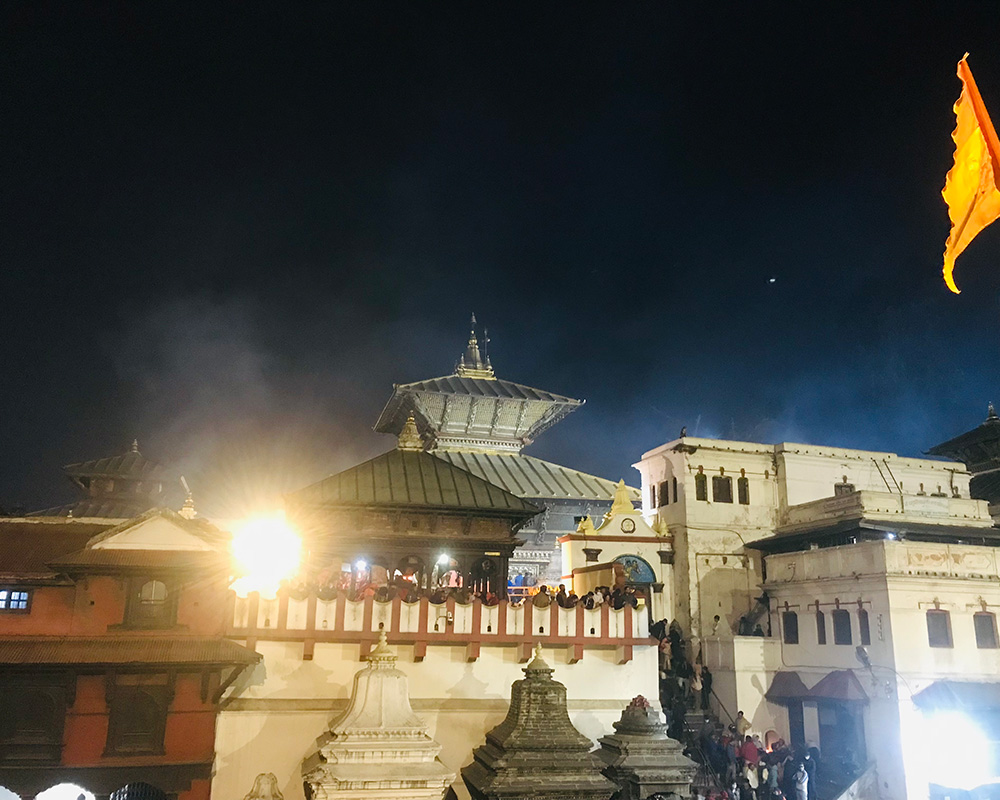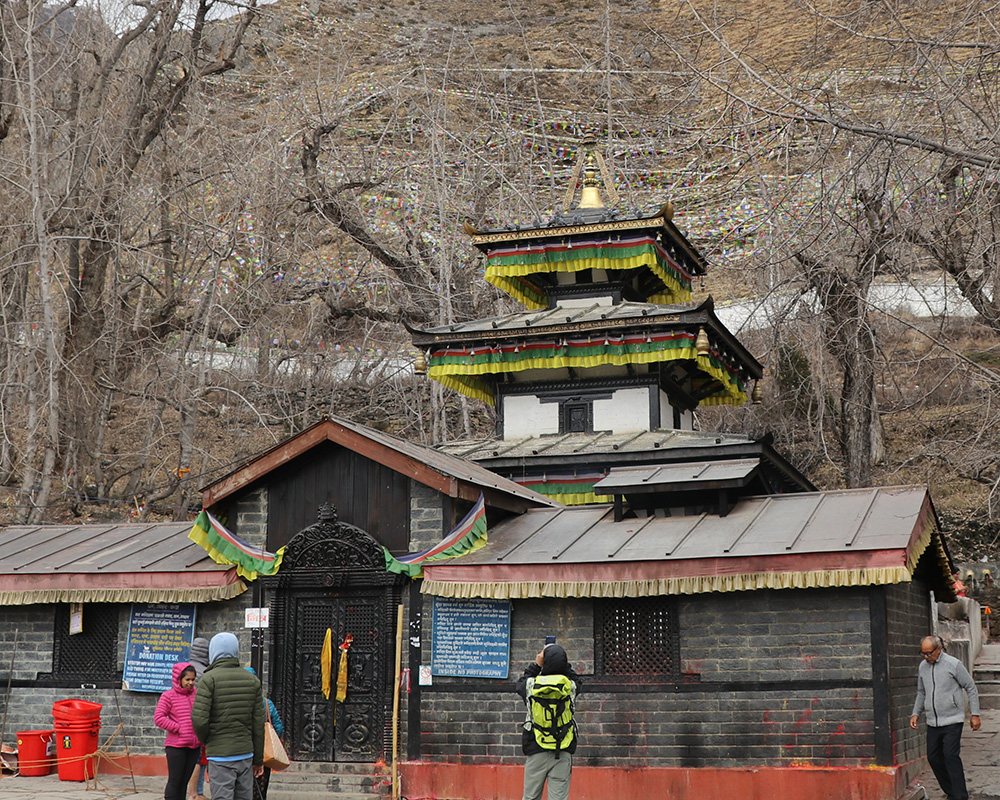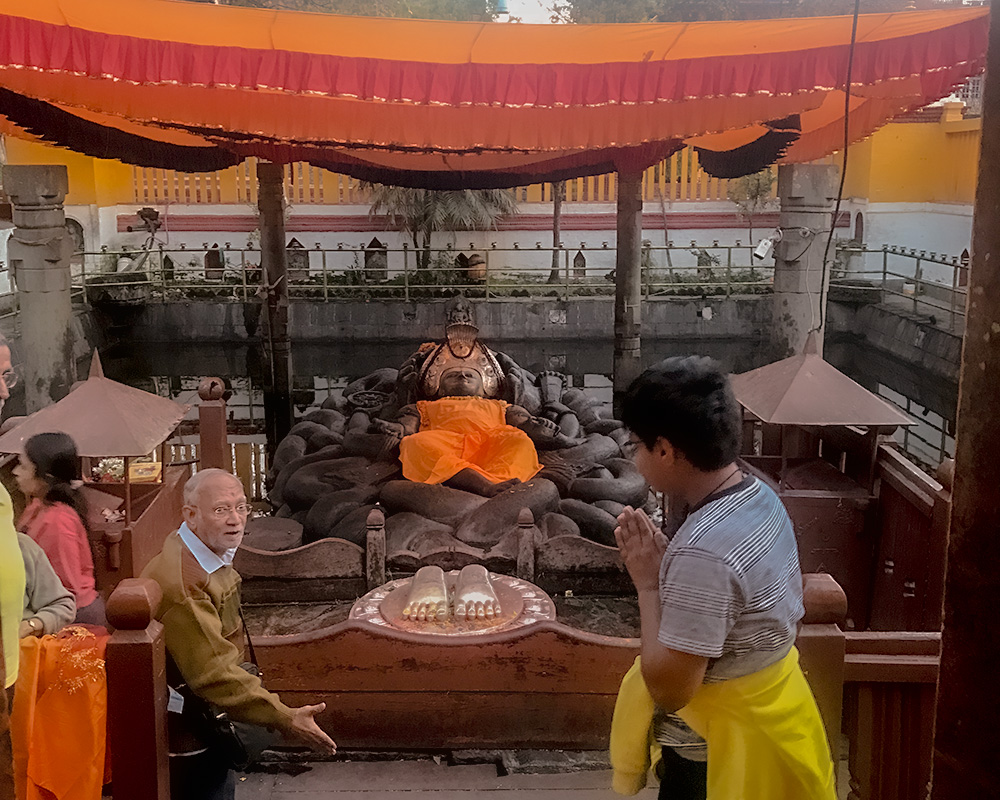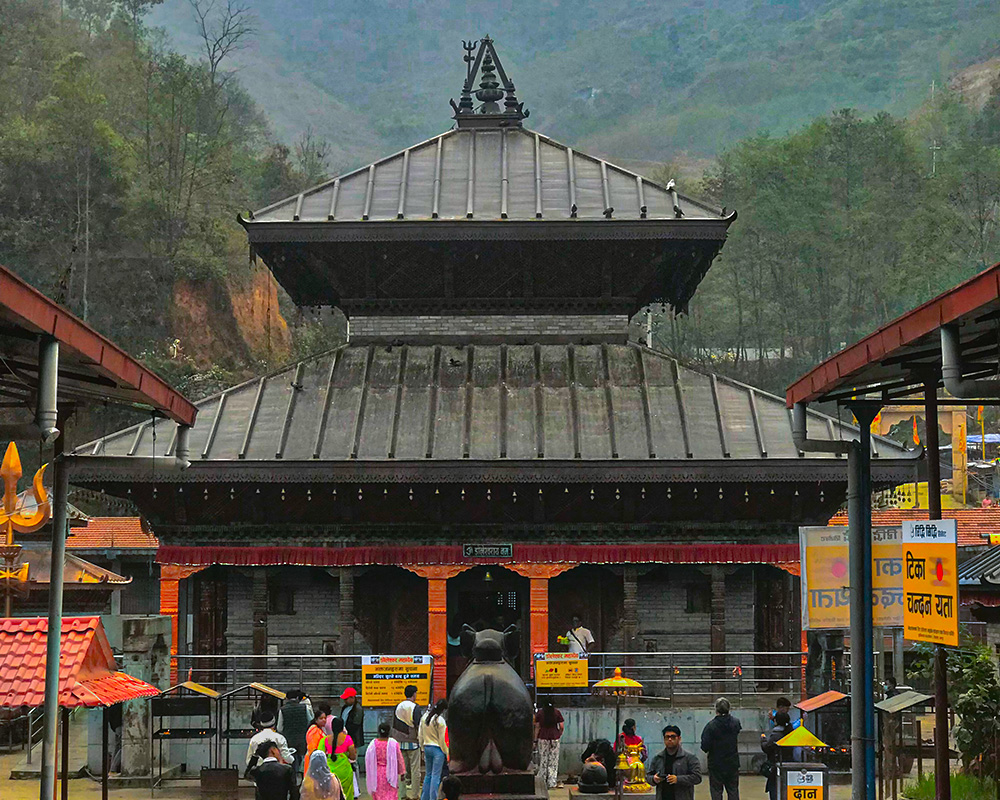Hindu temples are regarded as some of the most exquisite examples of Hindu architecture in the world and are a significant component of Nepal's rich cultural history. From the busy metropolis to the isolated mountain villages one can find several Hindu Temples in Nepal, as the majority of the population is Hindu.
In Nepal, temples are used for more than simply prayer; they also operate as hubs for cultural and social events. In addition to the faithful, visitors who come to appreciate their elaborate design, magnificent art, and distinctive cultural importance also go to these places of worship.
As there are many temples historical temples in Nepal, we have included a few lists of prominent temples that are worth a visit if you are Hindu.
Pashupatinath Temple
Dedicated to Lord Shiva, Pashupatinath is one of the oldest temples in Nepal. This holy temple lies in Kathmandu Valley within a bank of the Bagmati River. Pashupatinath is built in 400 ADs in a Pagoda Style standing 23.6 meters in an area of 264 hectares and collects 518 structures in its complex. The main architecture is built in two tiers and single wooden backing, a cubic structure with four entry doors made up of silver casings while the semi-triangular roofs are covered with copper and golden coat.
This temple was built as an appearance of Mahadev as a Pashu Pati (which means Protector or Lord of Animals). It attracts thousands of Nepalese and Foreign pilgrims and foreigners each day, and the entry to main temple is only permitted to Hindus. Inside the temple, one can see the Mukhalingam (Shivalinga with multi faces) and four faces structures here with silver covers and golden attire. Along the bank of the complex, the Funeral rites are performed by burning the body and immerging ashes in Bagmati.

Muktinath Temple
Muktinath translated as Mukti Kshetra (the lord of Salvation), a Hindu, and Buddhist temple devoted to Lord Vishnu lies in the Mustang district of Nepal. Along the trail of Kali Gandaki, this holy temple complex stands in the lap of the Annapurna at an altitude of 3,710 meters. The complex includes 108 holy taps above 7 feet and 2 Kundas (The holy pond known as Pap Kunda and Mukti Kunda) Pap Kunda means sins, and Mukti means Salvation. Overall, taking a dip in two Kundas and taking a bath on 108 taps provides Salvation. Also, Lord Buddha's architect, with several Monasteries intersect the complex.
As per Tibetan mythology, Muktinath temple belongs to 51 Shakti Pitham and is one among 24 tantric sites. It is believed that Sky dancers known as Dakinis reserve the temple. Every year thousands of Indian Pilgrims tour Muktinath Temple and so do the native pilgrims. Muktinath Temple can be reached in 3 days from Kathmandu with a Flight.

Jal Narayan (Sleeping Vishnu)
Located nearby Shivapuri National Park in Kathmandu Valley, known by various names Budhanilkantha, Jal Narayan, and Sleeping Vishnu is a mysterious architectural statue sleeping in a small pond (let's not call it a pond but the water reservoir). As seeing the facts Sleeping statue of Vishnu is seen adjacent to water and floats in the reservoir.
The architecture of the Vishnu is crafted within a single black basalt stone. It is designed as the base of Ananta Shesha (Serpents) and Lord Vishnu sleeps over Ananta Shesha. This statue represents how lord Vishnu relaxed in his regular cross-legged position over the cosmic ocean 11-headed Shesha as a bolster.
The statue is 5 meters in length over 14 meters of the reservoir. During Malla Dynasty in the 7th century, a farmer working in a field discovered the statue and later it was transferred to Budhanilkantha.

Manakamana Temple
Manakamana Temple is located in the Gorkha district. Built-in the 17th century during the reigns of Ram Shah as king of Gorkha on the top of a charming settlement. Manakamana is translated as Mana which means heart and Kamana meaning praising. Anyone who praises Durga Bhawani with a wholesome heart gets the wish fulfilled. It is an architecture in Pagoda Style similar to Pashupatinath in structure and a stone-craved Durga Bhawani statue inside. As pilgrims circulate around the temple and exit, one can see the great view and tiny sculptures of Durga's reincarnation as a multi-Hindu goddess.
Pilgrims offer flowers, candles, and Coconut to the temple and pray for the goddess and once the wish is fulfilled pilgrims revisit the temple to show gratitude. Similarly, non-Hindus and prohibited to enter the temple. Getting over there is both easy and hard. It is accessible by taking a cable car (Sky rope) from the Kurintar to the near top or hiking up to Manakamana.
Doleshwor Mahadev
Doleshwor Mahadev located in Bhaktapur is the lost and found head of the Kedarnath Temple in India. After 4000 years of searching for the head of the bull (Lord Shiva in a form) people recently discovered the interconnection between Kedarnath and Doleshwor in 2009 and prayed as the head. Doleshwor is similar in architecture and irregularly shaped Lingum to Kedarnath, which is built-in Pagoda style. Doleshwor was prayed by Hindus for a long time without knowing its origin. As its discovery thousands of pilgrims rushed to Doleshwor to complete their visit to Panch Kedar (5 Kedar temples). Pilgrims can visit 144 feet long Shiva Statue in Sangha while visiting Doleshwor.

Gujeshwori Shakti Peeth
Gujeshwori is one among the 64 Shakti Peeth (Shakti meaning Power and Peeth as Symbol) in Hinduism mentioned in Brahmananda Puran. This beautiful temple was constructed in the 17th century by King Pratap Malla in a pagoda style and ferries an exceptional interior. Gujeshwori Temple is a resemblance to the ultimate female power of the goddess Parvati. Located close to the Pashupatinath Temple Gujeshwori lies on the bank of the Bagmati River a Km east of the main temple and Bhairav Kunda Pond and Statue of Pratap Malla are seen on the complex. The combination of Pashupatinath and Gujeshwori resembles a symbol of Shiva Shakti.
It is believed that Goddess Parvati was a rebirth of Shatidevi (Love of Lord Shiva) and when Shatidevi set herself on fire due to the insult of Lord Shiva by her father. After death, her body part fell into the place where the temple was constructed.
Halesi Mahadev (Maratika Cave)
Halesi Mahadeva located in Khotang District is one of the great Hindu temples in Nepal. This temple is established in a natural and ancient meditation cave (Maratika Cave) on a small hill. This temple has a Shivalingam in between the Cave and is devoted to Hindu God Mahadev. Maratika is holy to three religions Hindu, Buddhist, and Kiratis, and of great importance for ancient history and culture as Maratika establishes the foundation for Guru Rinpoché's enlightened work over limitless lifetimes throughout India, Nepal, Tibet, and many other worlds through this historic link of the Mahaguru and his consort and their achievement of everlasting life.
Halesi Maratika is also a great viewpoint to enjoy the beautiful caves and several meditation places and connect spirituality in accordance to some of the crystally glowing highest mountains of the world. Halesi has a long-told and amazing history which will be worth a visit.
Janaki Mandir
Janaki Mandir or Janaki temple is home to the Sita Devi (adoration of Shree Ram) and the palace of King Janak is enlisted as a World Heritage site and one of the most visited temples in the world. Janaki Temple is constructed in an area of 4,860 Square feet and is a perfect example of creativity. It is designed in three stories full of marble and stones in a mixed style of Islamic and Rajput roofs and Hindu and Koiri architecture. The statue of Sita Devi is established in the inner sanctum of the complex. There are 60 rooms in the Temple Palace and all 60 of its rooms include exquisite lattice windows, turrets, carvings, colored glass, and other decorations.
Janaki Temple is visited mostly by Women while wearing a colorful sari. There is a little museum that tells the epic tale of Lord Rama and Devi Sita at the back of the temple complex. This is also a great opportunity to understand the history and culture of the temple and understand the interesting and mysterious incidents of Lord Rama’s visit to King Janak.
Dakshinkali Temple
Dakshinkali Temple located in Pharping village is one of the principal temples in Nepal devoted to the goddess Kali, which is situated 22 kilometers outside of Kathmandu and around 1 mile outside the hamlet of Pharping. Dakshinakali Temple is devoted to Devi Parvati, who took the form of the ferocious Hindu Goddess "Kali.". A picture of the god carved out of stone served as the principal shrine. The temple is situated in a peaceful setting and has a straightforward appearance.
The temple was built according to an ancient tradition that dates back more than 2,000 years, during the reign of Manadeva of the Lichchhavi dynasty, which was established by Supushpa, the first Aryan and Lichchhavi monarch of Nepal. Beyond it, there are several trees, a river, a few restaurants, and hotels in the vicinity of the Dakshinkali temple. Thousands of visitors visit the shrine during the Dashami (10 days when Durga Killed the Mahishasura) and the end of the Dashain festival. The temple is illuminated, and the aroma of burning incense sticks and echoing chanting gives off a mysterious ambiance.
Every Tuesday and Saturday, animal sacrifices, particularly of cockerels and male goats, are done to appease the goddess's bloodlust. As the sacrifice is performed, a sizable crowd of worshippers congregates around the temple.
Changu Narayan Temple
The Changu Narayan Temple, often regarded as Nepal's oldest temple, was constructed during the Lichhavi Dynasty. The Lord Vishnu figure of Narayan is the subject of the shrine. There are Four doorways of the two-tied pagoda-style temple guarded by stone lions. To the west of the temple lies a large Garuda statue. The prince of Bhaktapur was given Champak, the daughter of the Kashmiri ruler, in marriage. She inspired the name of Changu Narayan Temple. Consequently, this temple is among the finest specimens of prehistoric art and skill.
Later King Bhupatindra Malla and his queen are depicted on sculptures that are placed in front of the temple's entrance. The Narasingha statue (half lion and half man God) is the Changu Narayan Temple's main attraction. Over 1500-year-old detailed carvings are used to decorate the monument.
Changunarayan Museum can be added while you visit Temple as one can enjoy and learn the history and rural tradition of Nepal. A 500-year-old dish rack and 225-year-old rice grain and other items like a rhino leather shield, a leaf-made raincoat, and a cow's gallstone are demonstrated as the peek attraction.
Bindabashini Temple
Bindabashini Temple is located in Pokhara city dedicated to Lord Vishnu on the hilltop of the city. The temple complex is accessible within a 20-minute drive from the Lakeside of Pokhara. The white Pagoda-style temple is beautifully decorated with pillars and a Golden plinth and Bindabashini inside the white temple. The story Khadgaman Malla or Siddhi Narayan Malla, the king of Parbat, had a dream about building a temple for the goddess. Therefore, he sent orders for some of his warriors to return from modern-day Uttar Pradesh, India, with a statue of the goddess.
The warriors camped at the site of the present temple on their voyage. The god, however, was unable to be removed from the encampment, Thus, the temple was ultimately built in Mohariya Tole, Pokhara. This incident was recorded in 1842 BS as the reincarnation of Goddess which translates to the founding of the name “Bindabashini”. From Temple, one can see a great panorama of the Annapurna and Machhapuchhre range. The temple of Lord Shiva is established along the Bindabashini temple.
Conclusion
These temples have religious importance, but they also serve as significant cultural landmarks, showcasing the distinctive design, fine art, and traditions of Nepal's numerous ethnic groupings. In order to further emphasize their significance to Nepal's cultural legacy, several of these temples have also been included as UNESCO World Heritage Sites.
In general, Hindu temples in Nepal are an essential component of the nation's cultural identity and continue to be significant in the spiritual, social, and cultural lives of Nepalis and Hindu pilgrims.


